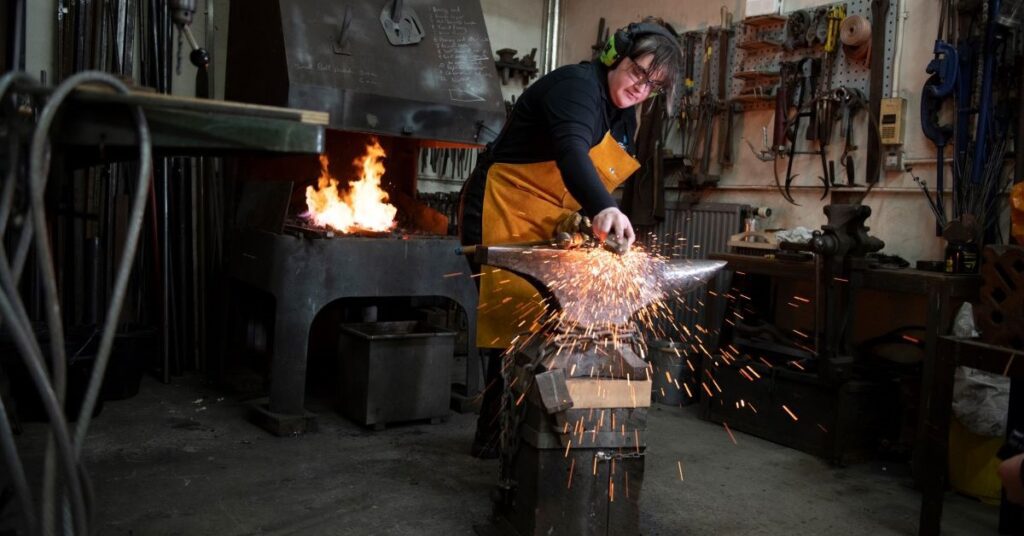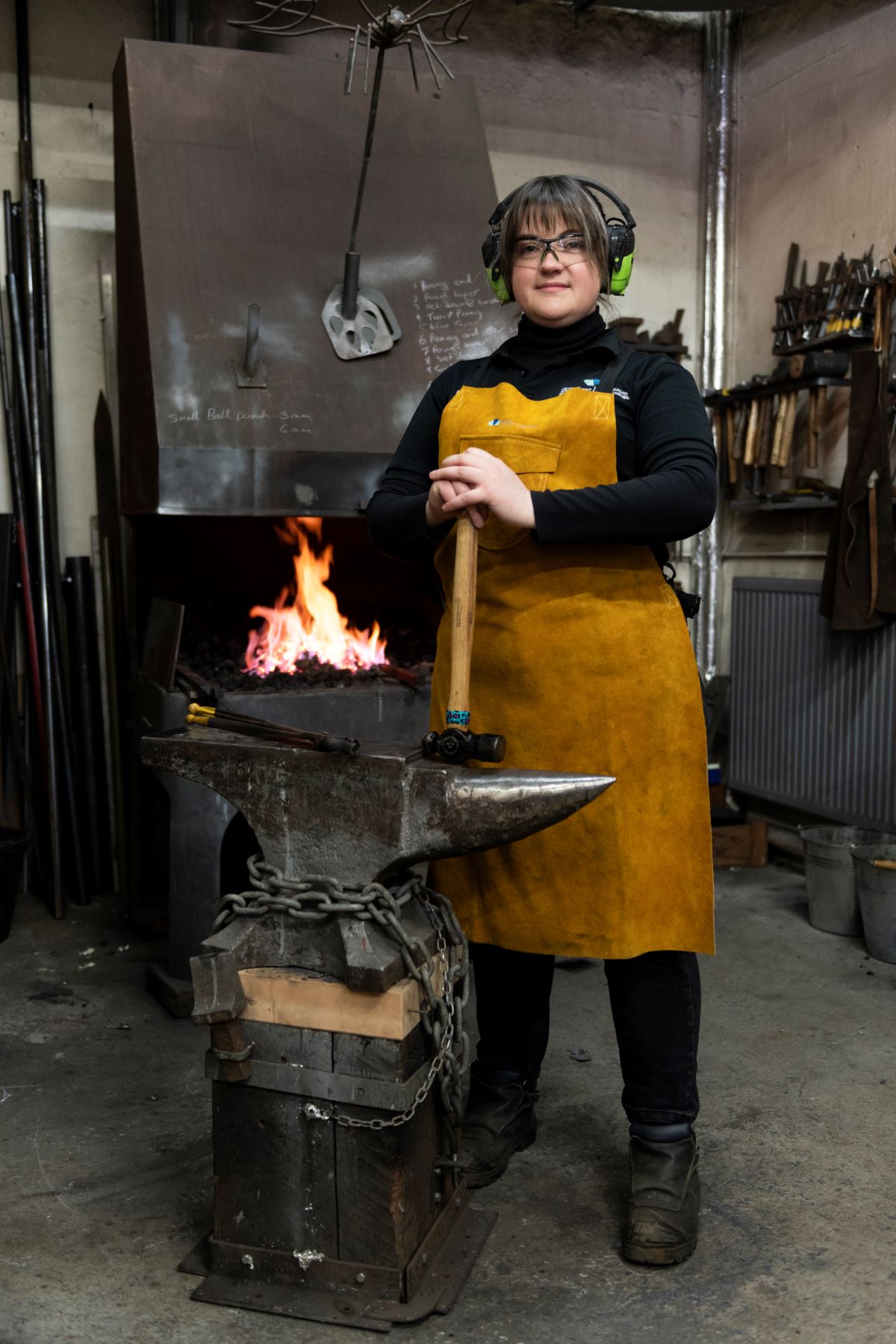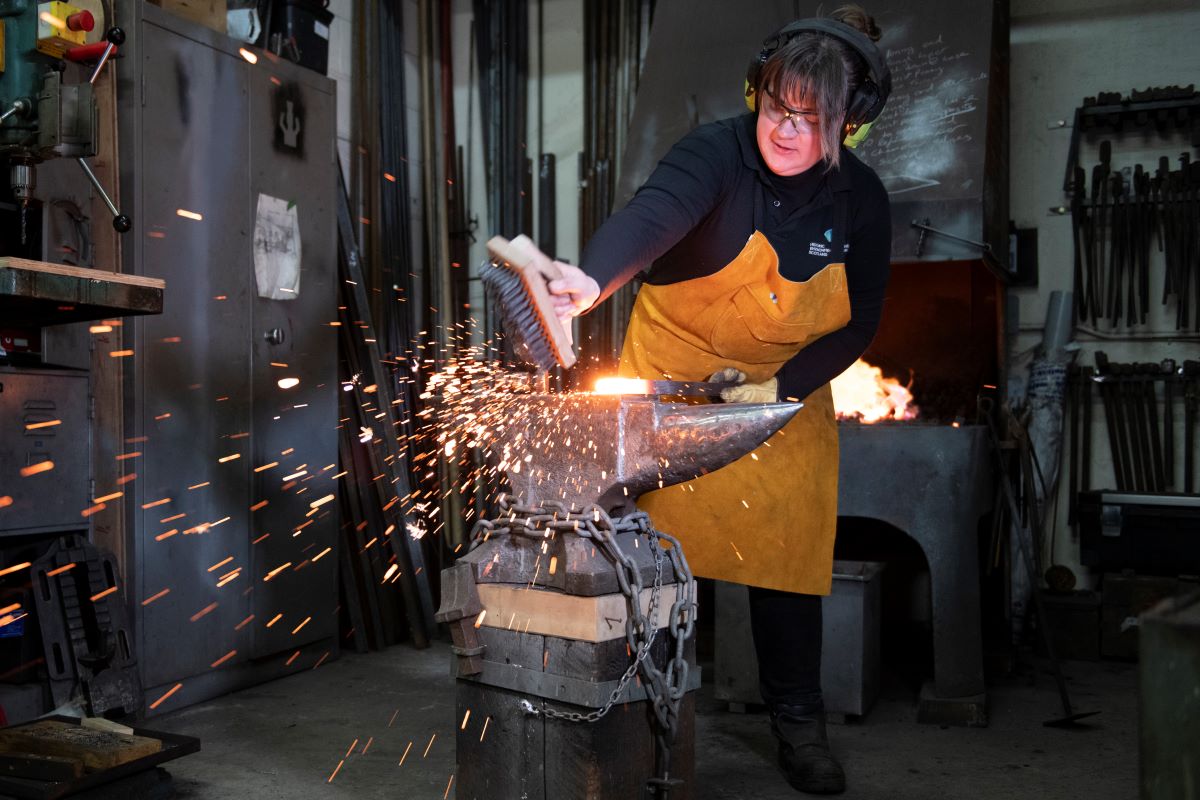
Life With a blacksmith: ‘We need to hold on to this craft, if we let it die out historic ironworks will suffer’
Historic Environment Scotland blacksmith, Stacey Hibberd, on growing up playing with tools, working on the King’s Coronation and delving into some of Scotland’s most historic buildings.
When I was a child I was determined to be a vet up until I was about 12 when I decided to be a farrier. I suppose I was never a girly girl, even as a child, I used to play with toy cars and tools – I absolutely hated dolls. There’s definitely a photo or two of me raiding my grampy’s tool box.
I started out as an apprentice farrier at 16, but after two years I decided I enjoyed the forging side of the work more and sought out blacksmithing instead. I quickly realised that artist blacksmithing wasn’t going to be my forte, as I struggled to come up with designs, and realised conservation was where I wanted to be.
Blacksmithing is an important craft we need to work to hold onto. If we allow the craft to die out there will be no-one left in the country who knows how to make ironwork with traditional techniques, just as we have lost the ability to produce gold leaf in this country and are close to losing skills like chain making and iron production. Many important historic ironworks will be left to rot as no-one can repair them or it will be too expensive to hire someone from another country to carry out repairs.
‘It’s amazing to see the original ironwork drawings’
My work day starts at 8am. First thing’s first, I make a cup of tea, my day revolves around my tea intake. If the project I am working on requires forging, I light the forge as it can take a while to warm up. While that’s happening I cut up the metal that I’ll need.
My days vary. Sometimes it can be site visits, I’ve been to Glasgow Cathedral, Dumfries and Elcho Castle to consult on ironwork, as well as my more regular visits to Edinburgh Castle and the Palace of Holyrood House. Occasionally they involve making condition reports and photographing ironwork. These reports can be providing historical context which sometimes requires hours of research and looking through national archives. But it can be amazing to see original drawings or letters about the ironwork when you find them.
More often though my day consists of finding or making parts for other departments or conserving, maintaining and repairing a variety of objects brought to the workshop, I’ve worked on everything from manhole covers and brackets to tools and locks.

Stacey started out as an apprentice farrier before deciding to become a blacksmith. Credit: Historic Environment Scotland.
‘It was strange feeling to work on something so historic’
I was lucky enough to be involved with some of the work for the King’s coronation. I helped create several roundels in pewter. Some were used on the box that contained the Stone of Destiny and some were used as commemorative gifts. The roundels were originally made by HES stonemasons and depicted a lion rampant. These were then made into 3D prints. I then made a mould of each one using a heat resistant silicone rubber. Once the moulds were set and the 3D print removed, I was able to pour molten pewter directly into the mould.
There were a few issues when casting the larger roundel as it was difficult to get the metal to flow evenly around the mould, but we got there in the end. The castings then had to have excess material removed and cleaned up. Once I had finished the castings they were gilded before being set into wood. It was such a strange experience to be working on something that you know will be remembered in history, to know that you are living through a historical moment.
I have carried out an initial assessment on the iron windows of the Military Prison at Edinburgh Castle, most of which are in fantastic condition considering their age (they were installed in the 1800s) but a few are in a poor condition. I had initially thought the windows were cast iron as this is pretty common, however, these are made from wrought iron and constructed in such a way that I haven’t seen before, which is going to make repairing them an interesting puzzle.

Stacey worked on the King’s Coronation. Credit: Historic Environment Scotland.
I love being able to deep dive into an object’s history when the occasion calls for it. Finding out who made it, how it was made and why it was made make an object that can often be overlooked in day to day life so much more interesting. Being able to access areas the public wouldn’t normally see to carry out work is always an amazing perk too.
I finish at 4:30pm most days and I’m usually home by 5pm. I do a lot of work with the National Heritage Ironwork Group so it can be hard to completely shut off from work when I am working on projects for them too. I’m a bit of a homebody, so once I get home I don’t usually go out again. If my partner is home then we usually relax with a movie or TV show. If it’s just me for the evening then I usually cuddle up with the cat and a book or K-drama.
Read more from the Life With series here.
Subscribe to read the latest issue of Scottish Field.
TAGS

